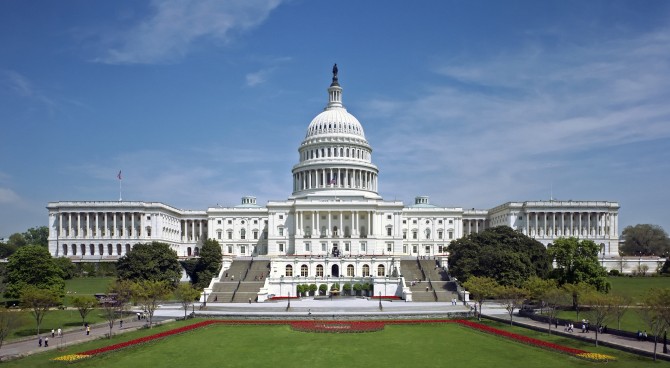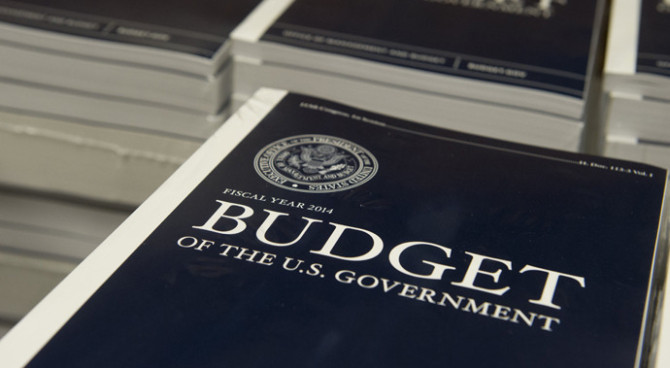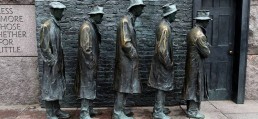When President Obama took office during the 2007-09 recession no president was ever better positioned to lead a strong recovery. With an impressive electoral mandate, Mr. Obama enjoyed a filibuster-proof Senate supermajority, a 79-vote House majority and a nation ready for change. History too seemed to smile on Mr. Obama’s endeavor. The recession ended just six months into his first term and, with the sole exception of the Great Depression, every severe recession since 1870—when reliable annual data were first collected—had been followed by a vigorous recovery.
In his capacity to implement his program, Mr. Obama stood as a colossus with the fates on his side, the vast power of government at his disposal and no one—not Congress, the Supreme Court or the Federal Reserve—willing or able to deny his will. No resources were spared. The Obama $836 billion stimulus exceeded all previous U.S. economic stimulus programs combined. The Treasury borrowed over $1 trillion a year for four years in a row, according to Office of Management and Budget data. The Federal Reserve injected $3 trillion of new reserves into the banking system, generating record-low interest rates.
Every government forecaster predicted happy days would soon be here again. In August 2010, the Congressional Budget Office projected 3.3% average real GDP growth for 2010-15. The Federal Reserve forecast growth as strong as 3.7%. Mr. Obama’s own Office of Management and Budget expected peak growth of 4.5%. And these estimates were conservative as compared with the actual recovery patterns that had followed every major recession except the Depression.
In the six decades from 1948 to 2007, the U.S. economy grew at an average annual rate of 3.5%, including all the negative growth years during 10 recessions, according to the Commerce Department’s Bureau of Economic Affairs. Yet not once in the last seven years has annual economic growth ever reached 3%. Average real per capita income grew five times faster during the Clinton recovery, seven times faster during the Reagan recovery and 10 times faster during the Kennedy/Johnson recovery than during the Obama recovery.
In all recoveries following all 30 economic contractions since 1870, only two have failed to have strong rebounds after deep recessions. Only two are now labeled “Great” because of the long periods of suffering they caused. And in only two recoveries did government impose economic policies radically different from the policies pursued in all the other recoveries—different than traditional policy but similar to each other— FDR’s Great Depression and Mr. Obama’s Great Recession.
From 1932-36, federal spending skyrocketed 77%, the national debt rose by over 73%, and top tax rates more than tripled, from 25% to 79%. But the tectonic shift brought about by the New Deal was the federal government’s involvement in the economy, as a tidal wave of new laws were enacted and more executive orders were issued than by all subsequent presidents combined through President Clinton.
The resulting economic paralysis was described in 1936 by Al Smith, former New York governor and Democratic presidential nominee, as a “vast octopus set up by government that wound its arms all around the business of the country, paralyzed big business and choked little business to death.” Winston Churchill described U.S. Depression-era policies as “wages, prices and labour conditions grasped in muscular hands and nailed to an arbitrary framework.”
As government assumed greater control, private investment collapsed, averaging only 40% of the 1929 level for nine consecutive years. League of Nations data show that by 1938, in five of the six most-developed countries in the world industrial production was on average 23% above 1929 levels, but in the U.S. it was still down by 10%. Employment in five of the six major developed countries averaged 12% above the pre-Depression levels while U.S. employment was still down by 20%. Before the Great Depression, real per capita GDP in the U.S. was about 25% larger than it was in Britain. By 1938, real per capita GDP in Britain was slightly higher than in the U.S.
When Mr. Obama replicated some of FDR’s “progressive” policies, history was there to reteach its lessons. Spending surged 18% in the first year of the Obama administration. The publicly held national debt more than doubled. Marginal tax rates on ordinary income rose by 24% and taxes on capital gains and dividends rose by 59%. American businesses toiled under the world’s highest corporate tax rate and the world’s most punitive treatment of foreign earnings. Through law and regulation, government control of the economy grew as red tape that once had encumbered came to dominate health care, financial services, energy production and the internet.
Every 10 years between 1870 and 2007, incomes for each man, woman and child in America rose on average by 21.6%, according to census data and the Madison Project. This extraordinary achievement is the tangible measure of the extent to which the American dream actually came true. Only twice did that dream falter—in the Great Depression and the Great Recession. Whether we call it progressivism or socialism, bad policies produce bad results—not just sometimes in some places, but at all times in all places, even in America.
The dominant lesson of the Great Depression and the Great Recession is that when government overspends, overtaxes and over-regulates, economic freedom is suppressed and economic growth vanishes. When growth fades, it takes the American dream with it. Give America back its economic system of freedom and opportunity, and the ensuing growth will bring back the American dream.
Mr. Gramm, a former chairman of the Senate Banking Committee, is a visiting scholar at the American Enterprise Institute. Mr. Solon is a partner of US Policy Metrics.



